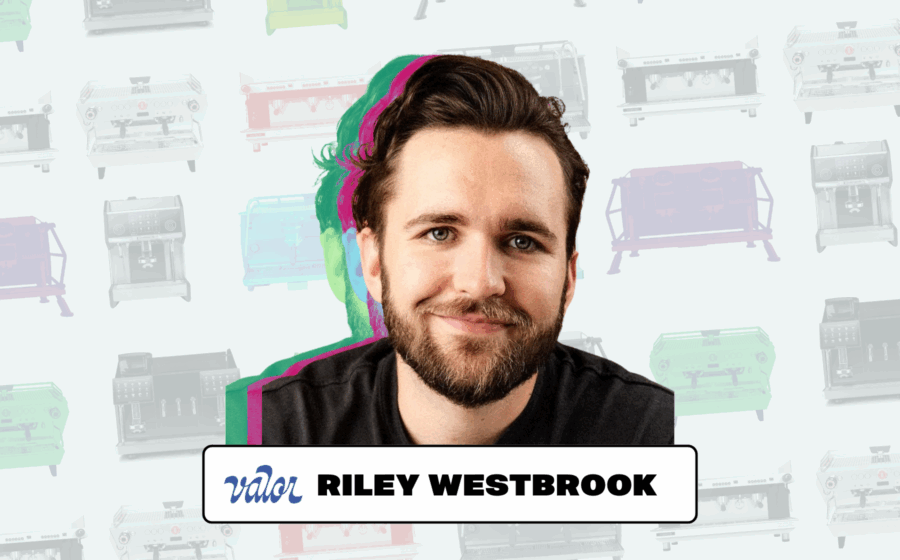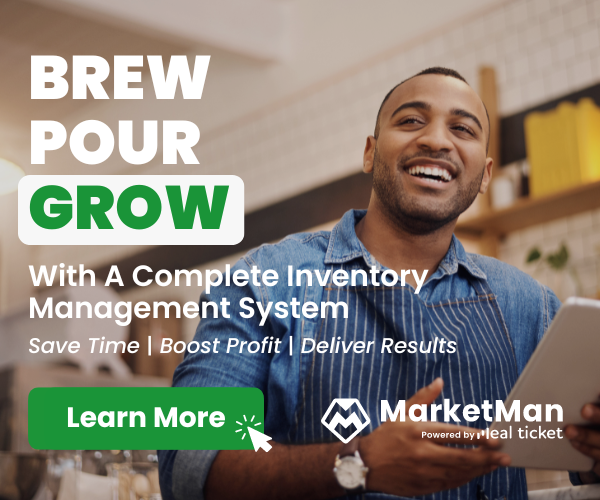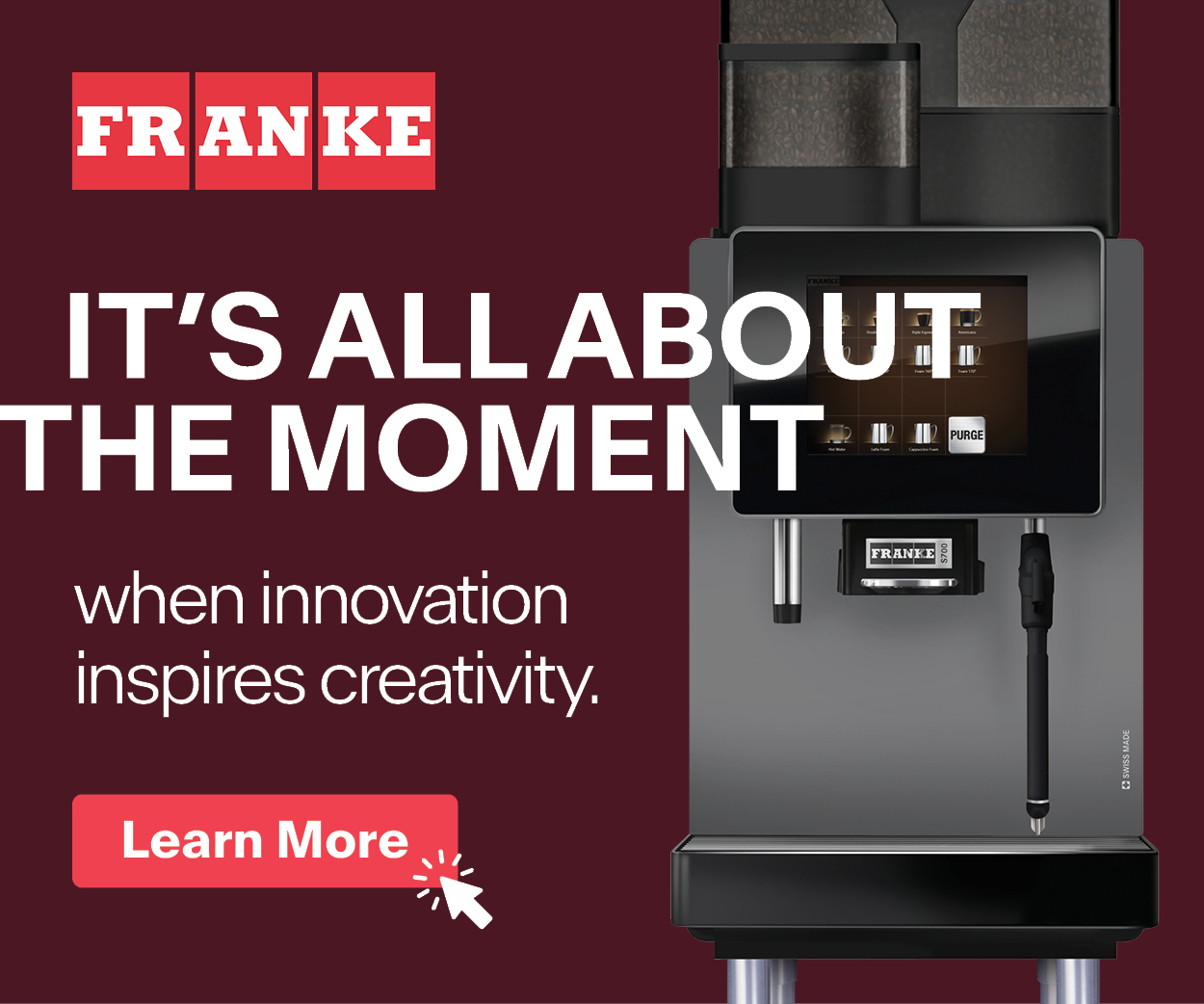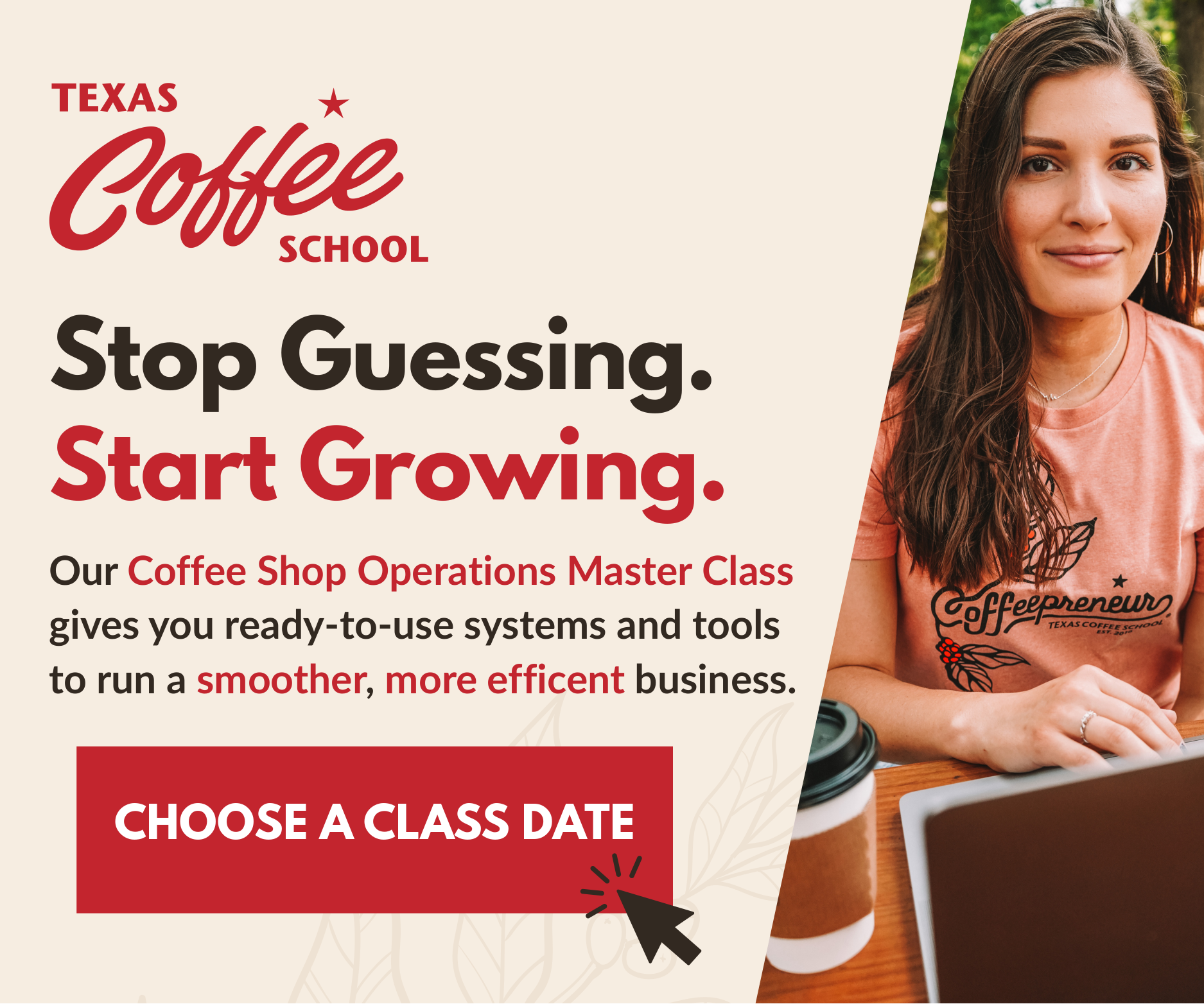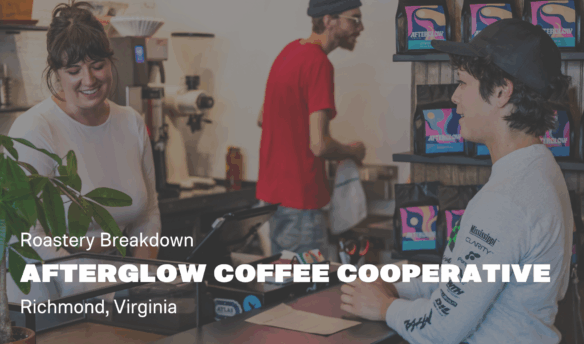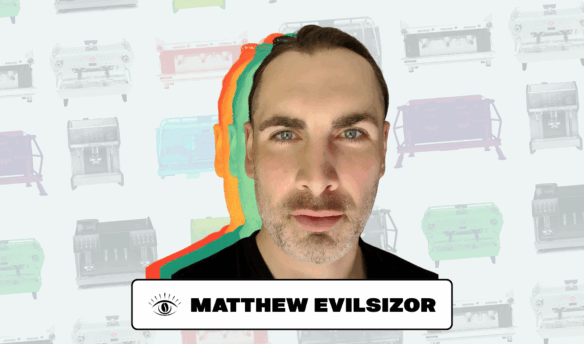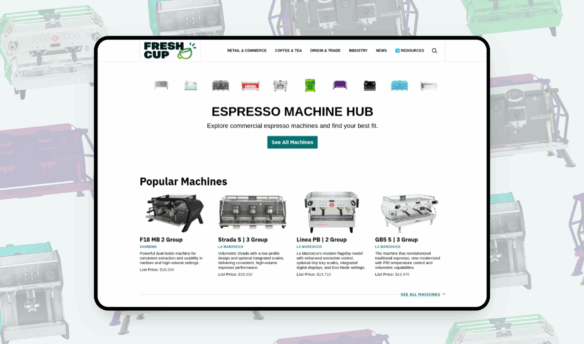Together with his co-founders, Riley Westbrook has taken Valor Coffee from a single coffee cart into a multi-location coffee brand. Today, the Atlanta–based business operates three cafes, plus a roastery.
Over the years and buildouts, he’s developed a pragmatic approach to buying espresso equipment. Hint: It’s more about reliability than having the flashiest gear lineup in town. “Bells and whistles are cool in practice,” Westbrook says. “But the latest features are only a nice glimpse into the future if they don’t cause issues or take away from our ability to make a consistent product.”
Hey! We built a cool new tool to help you discover and learn about espresso machines called the Espresso Machine Hub! Check it out here!
During our conversation, Westbrook breaks down equipment recommendations across different business models. For example, his team relies on La Marzocco GS3 AVs for catering, but he’d opt for an Eversys machine for a hypothetical drive-thru concept. He also discusses the reality of working with Modbar systems, explains why serviceability should be your top priority, and shares advice for cafe owners working with tight budgets—from someone who’s been there.
Whether you’re starting with a single cart or scaling up to multiple locations, Westbrook’s perspective offers the kind of practical wisdom that only comes from years of making these decisions in real-world scenarios. Read on for his learnings, derived from both the wins and the mistakes along the way.
What’s your favorite espresso setup that you’ve worked on?
I’m stoked on our current workflow at our Alpharetta cafe. We rock a two-group Strada S. It features integrated scales, so we can get very accurate outputs, which is a huge plus in our busy workflow. We typically work with a brewer (shot puller) who grabs shots from grinders to the left of the machine. Then we work towards the right, where the expo (drink finisher) typically steams milk. Yes—our right steam wand gets abused more than the left.
In busier moments, we steam on both sides of the machines. We have pitcher rinsers on each side to make workflows easier, but shots are still just pulled using grinders to the left, or our back bar EK (43 grinder).
For our coffee shot, we pull shots from our EK43 on our back bar into a portafilter with a filter. We then take that liquid and filter again through a V60 filter. This allows us to not pull attention towards a pour-over station and, instead, focus our attention on guest interaction.
We were using the Mahlkönig E80S for a minute, but we have since phased it out. Even with all the upgrades that are offered, this grinder just sprays coffee everywhere. Another small complaint is that the torque of the grinder causes it to constantly spin out of place. Some call us crazy for reverting to conical burrs, but we actually switched to the Mazzer Robur S at both locations and we’ve been thrilled with the results. Our milk beverages are tasting better than ever, and this grinder is a workhorse.
I feel like an old, grumpy cafe owner for saying this, but bells and whistles are cool in practice. But the latest features are only a nice glimpse into the future if they cause issues or take away from our ability to make a consistent product and intentional guest experience that can be replicated hundreds of thousands of times. That’s why I lean towards equipment that maybe isn’t the sexiest or newest products.
Which espresso machine(s) would you recommend for a coffee cart or truck?
For catering, my recommendation starts and stops with a machine that has really great volumetric features. Lots of times you might find yourself doing these events alone, so you really benefit from not having to babysit a timer and manually cut your shots. We use La Marzocco GS3 AVs on our carts. Parts are readily available, and our local tech—shoutout Caleb at Bronnie’s—is a La Marzocco wizard. Being able to rely on your gear and have it fixed if something does happen is maybe the most important thing.
Which espresso machine(s) would you recommend for a high-volume coffee shop or cafe?
The idea in our Dunwoody cafe was to accomplish this high-volume vision using a Modbar system with ABR, splitting the flow into a three-group-head, two-steam-wand configuration. Then we could simply break our roles out into “brewer” (shot-puller) and “expo” (steamer). This seemed great, but honestly, our experience with Modbar’s steam wands has been not so great, and I can’t say I’d go in that direction again.
Now, I’d likely recommend a Strada S or X for a cafe pushing heavy volume. These machines are so rock-solid and haven’t put up much of a fuss for us. If you’re on the lower end of high-volume, you’d probably be able to get by with a two-group if you use the four-portafilter method. Otherwise, just go all out and get a three-group.
Which espresso machine(s) would you recommend for a restaurant or other lower-volume setting?
I tend to recommend La Marzocco’s single-group machines, specifically the Linea Mini or GS3, for most restaurant concepts. The results are great, and if you go with the GS3’s easy volumetrics, you create an easier dial-in method for employees who are likely brewing coffee as a secondary focus. Having an extra portafilter to be able to grind for your next shot while pulling one will help if you get a few back-to-back cappuccinos.
Which espresso machine(s) would you recommend for a drive-thru or other speed-focused setting?
I’ve gotten my hands on the Eversys lineup of machines, and I think if Valor opened a drive-thru concept, we would certainly go in this direction. These machines are just so programmable and push a great product. Having the ability to serve amazing beverages in tight windows means these machines just work for speed-focused settings.
Which espresso machine(s) would you recommend for a small budget?
If I was starting a cafe with a small budget—and I have—I’d be scouring Facebook Marketplace for used machine deals, specifically on the legendary, highly serviceable machines, like a La Marzocco Linea AV Two-Group. Sure, you might have to do some cleanup, but these machines are bulletproof and can last for many years to come. Just have your local tech involved to ensure you’re getting a solid deal for a solid machine.
What’s one thing coffee business leaders should think about when buying a commercial espresso machine?
Serviceability. If you’re going to DIY, you need to be able to easily buy parts and understand the components of the machine. If you’re going to have someone else service it, make sure your tech can get parts easily and knows how to work on the machine.
What’s the most underrated feature of an espresso machine you’ve come across?
My first couple coffee jobs had machines with timers, something you don’t appreciate until it’s taken away. When I had to manually start a timer on every single shot, it pushed my focus totally towards the product, not the guest.
Anything else that could be helpful to know? Any final suggestions?
You can always start with one machine and move to another later. If you’re building out a cafe and have a very tight budget, consider a solid machine that might not be the very top of the line. This will allow you to put more money towards the boring things that could make a huge difference between the lowest-end model and the better brands—better, more trustworthy refrigerators come to mind, out of experience. Then crush it for a couple years, save some cash, and snag your dream machine. Peace!



